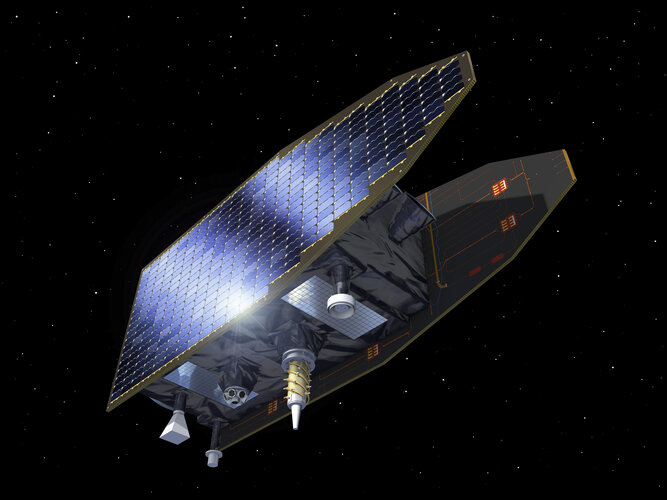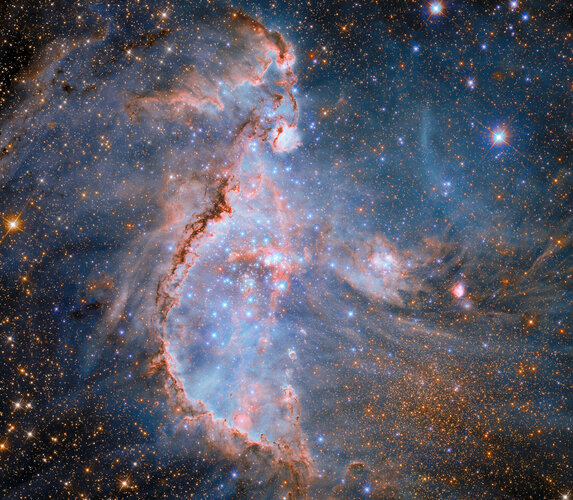Perfecting Payloads: Raytheon Uses Digital Engineering to Unlock the Next Generation of Remote Sensing
Monday, 07 April 2025 02:19
Humans have excellent vision. Compared to most animals, they can see longer distances with more colors and finer details.
Blue Origin plans an all-female space flight—but astronaut memoirs reveal the cost of being exceptional
Sunday, 06 April 2025 20:00This request seems a bit unusual, so we need to confirm that you're human. Please press and hold the button until it turns completely green. Thank you for your cooperation!
Press and hold the button
If you believe this is an error, please contact our support team.
185.132.36.159 : 033f7d7d-c0c5-4ed1-952b-4ec97286
DORIS joins ESA’s Genesis mission
Sunday, 06 April 2025 17:37
The second Genesis Science Workshop, held on 3 and 4 April in Matera, Italy, brought together the ESA Genesis team, industry experts and scientists from the international community to discuss the mission’s progress, including the latest satellite design evolutions, and prepare for the most extensive science exploitation possible. ESA and the French Space Agency CNES signed a contract during the event, confirming that the fourth geodetic technique, DORIS, will join the mission.
Aetherflux raises $50 million for space-based solar power
Sunday, 06 April 2025 14:56
A startup taking an alternative approach to space-based solar power has raised $50 million as it works towards a first demonstration mission next year.
Missile Defense Agency opens door to commercial firms for “Golden Dome” project
Sunday, 06 April 2025 13:00
A conference later this month will explore space-interception concepts, with particular interest in boost-phase capabilities.
The post Missile Defense Agency opens door to commercial firms for “Golden Dome” project appeared first on SpaceNews.
NASA seeks proposals for two private astronaut missions to ISS
Friday, 04 April 2025 22:40
NASA’s latest call for proposals for private astronaut missions to the space station opens the door to having those missions commanded by someone other than a former NASA astronaut.
Space companies swept up in far-reaching trade war
Friday, 04 April 2025 20:38
Space companies joined heavy stock market declines across the board as governments started responding to sweeping U.S.
SpaceX, ULA, Blue Origin win $13.7 billion in U.S. military launch contracts through 2029
Friday, 04 April 2025 20:38
The contracts, announced April 4 by the U.S.
Fram2 completes polar orbit private astronaut mission
Friday, 04 April 2025 16:55
A Crew Dragon spacecraft splashed down off the California coast April 4, wrapping up a three-and-a-half-day private astronaut mission in polar orbit.
Four space tourists return to Earth after a private flight over the poles
Friday, 04 April 2025 15:49This request seems a bit unusual, so we need to confirm that you're human. Please press and hold the button until it turns completely green. Thank you for your cooperation!
Press and hold the button
If you believe this is an error, please contact our support team.
185.132.36.159 : 6e13278d-3ba6-4378-9e9a-ebbc7511
A mission that could reach Mercury on solar sails alone
Friday, 04 April 2025 14:46This request seems a bit unusual, so we need to confirm that you're human. Please press and hold the button until it turns completely green. Thank you for your cooperation!
Press and hold the button
If you believe this is an error, please contact our support team.
185.132.36.159 : ed4dc84f-63e3-49c8-853e-76757b88
Week in images: 31 March - 04 April 2025
Friday, 04 April 2025 12:15
Week in images: 31 March - 04 April 2025
Discover our week through the lens
Golden Dome: who and what should it defend?
Friday, 04 April 2025 12:00
On January 27, President Trump ordered the Pentagon to develop “a reference architecture, capabilities-based requirements, and an implementation plan for the next-generation missile defense shield,” which, inspired by Israel’s Iron […]
Rising odds asteroid that briefly threatened Earth will hit Moon
Friday, 04 April 2025 08:50 An huge asteroid that was briefly feared to strike Earth now has a nearly four percent chance of smashing into the Moon, according to new data from the James Webb Space Telescope.
The asteroid, thought to be capable of levelling a city, set a new record in February for having the highest chance - 3.1 percent - of hitting our home planet than scientists have ever measured.
Earth's plan
An huge asteroid that was briefly feared to strike Earth now has a nearly four percent chance of smashing into the Moon, according to new data from the James Webb Space Telescope.
The asteroid, thought to be capable of levelling a city, set a new record in February for having the highest chance - 3.1 percent - of hitting our home planet than scientists have ever measured.
Earth's plan Amazon prepares to launch first full batch of Project Kuiper satellites
Friday, 04 April 2025 08:50 Amazon's Project Kuiper said Wednesday it is planning to launch 27 satellites April 9 from Cape Canaveral Space Force Station, Florida.
It is the project's first full batch of Internet connection satellites and will be launched by United Launch Alliance.
According to Project Kuiper their first-generation satellite system will put a total of 3,200 into orbit in the first constella
Amazon's Project Kuiper said Wednesday it is planning to launch 27 satellites April 9 from Cape Canaveral Space Force Station, Florida.
It is the project's first full batch of Internet connection satellites and will be launched by United Launch Alliance.
According to Project Kuiper their first-generation satellite system will put a total of 3,200 into orbit in the first constella 
